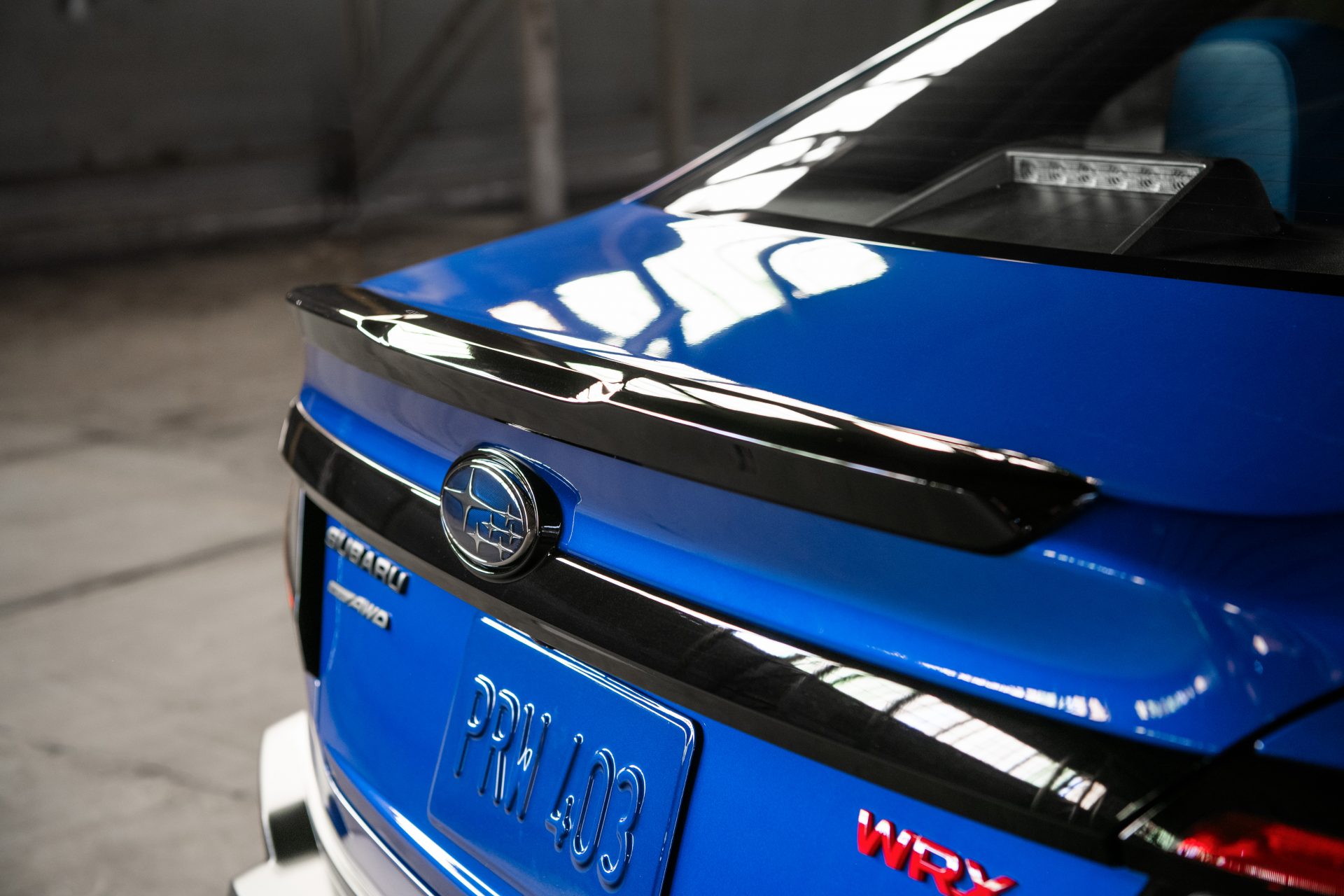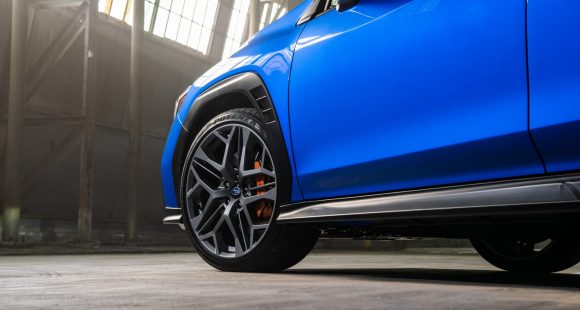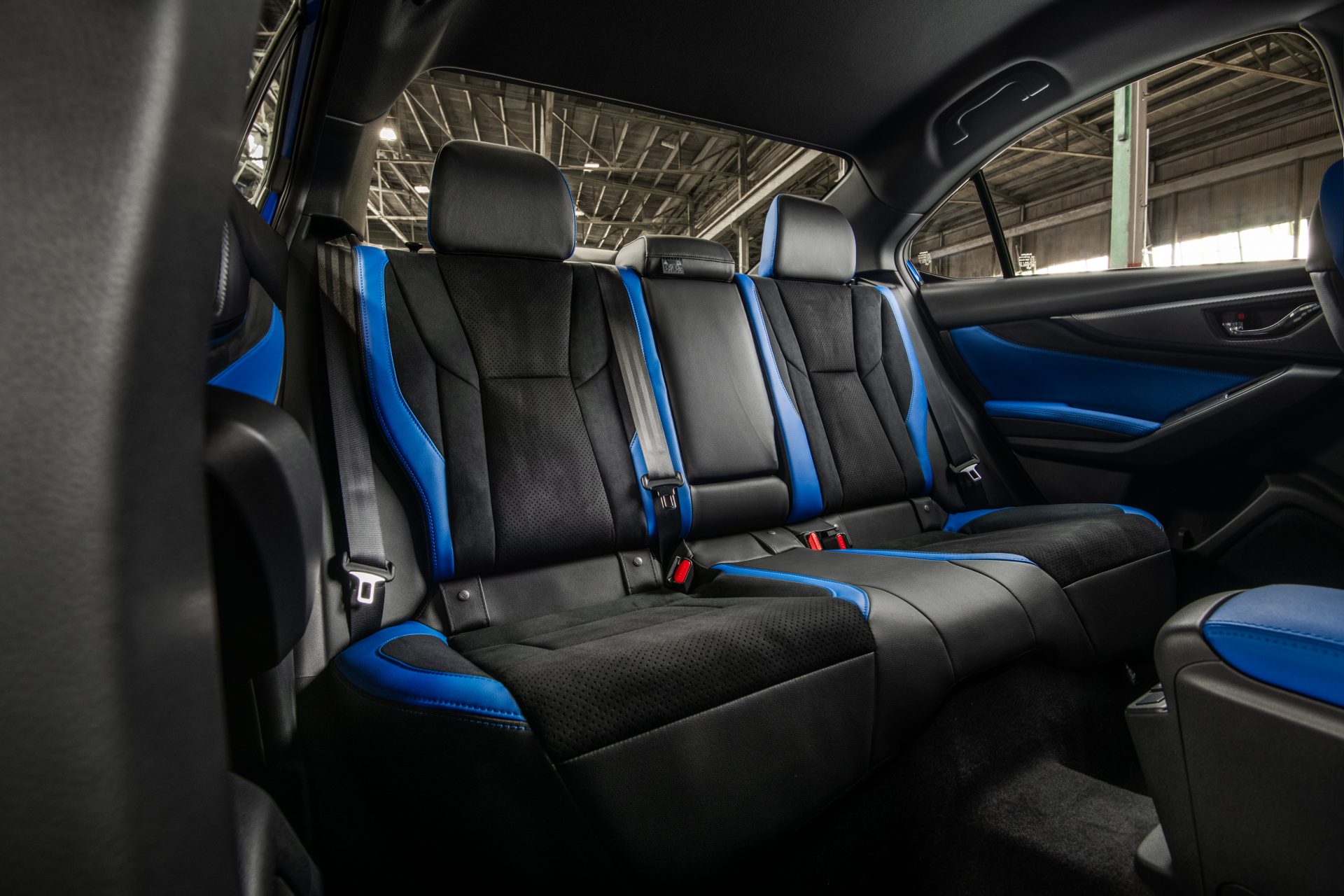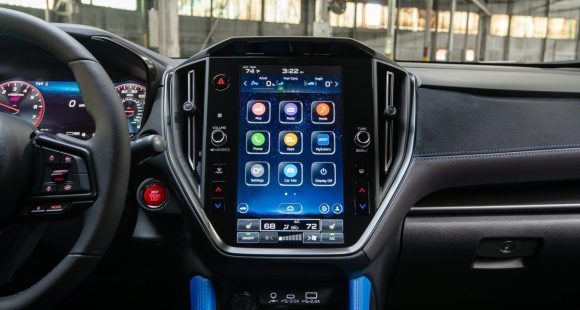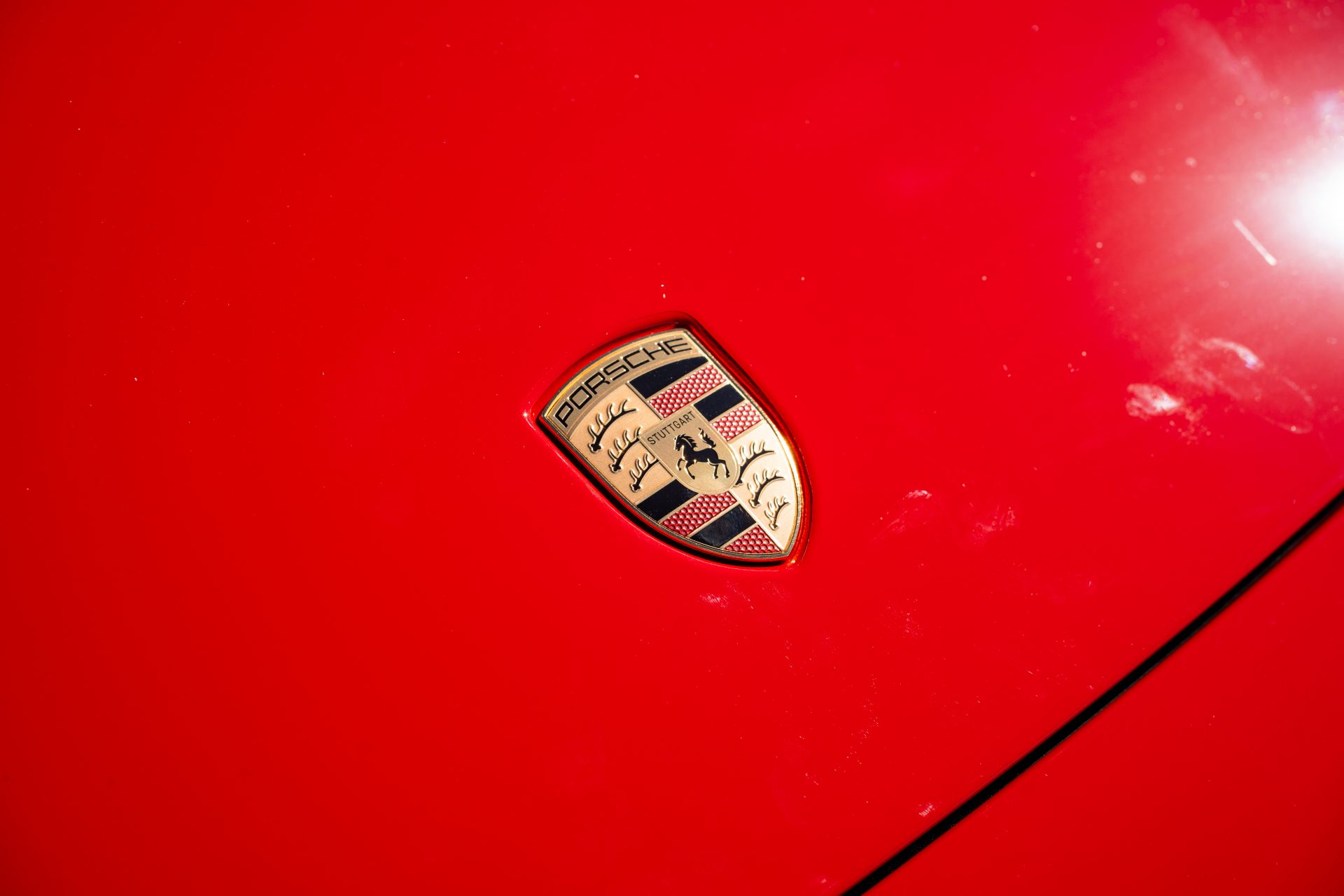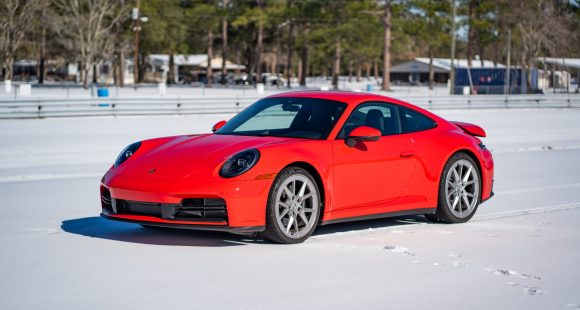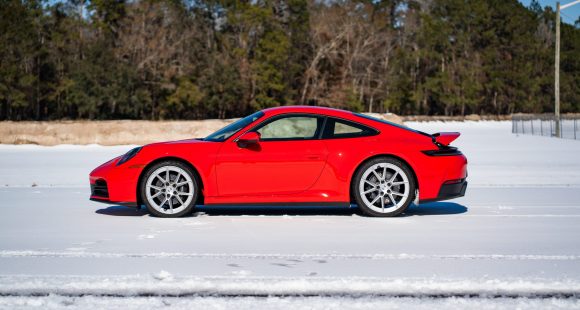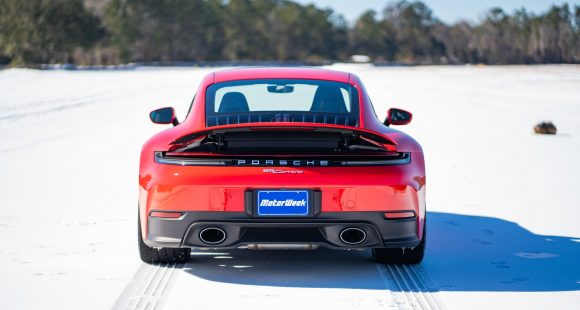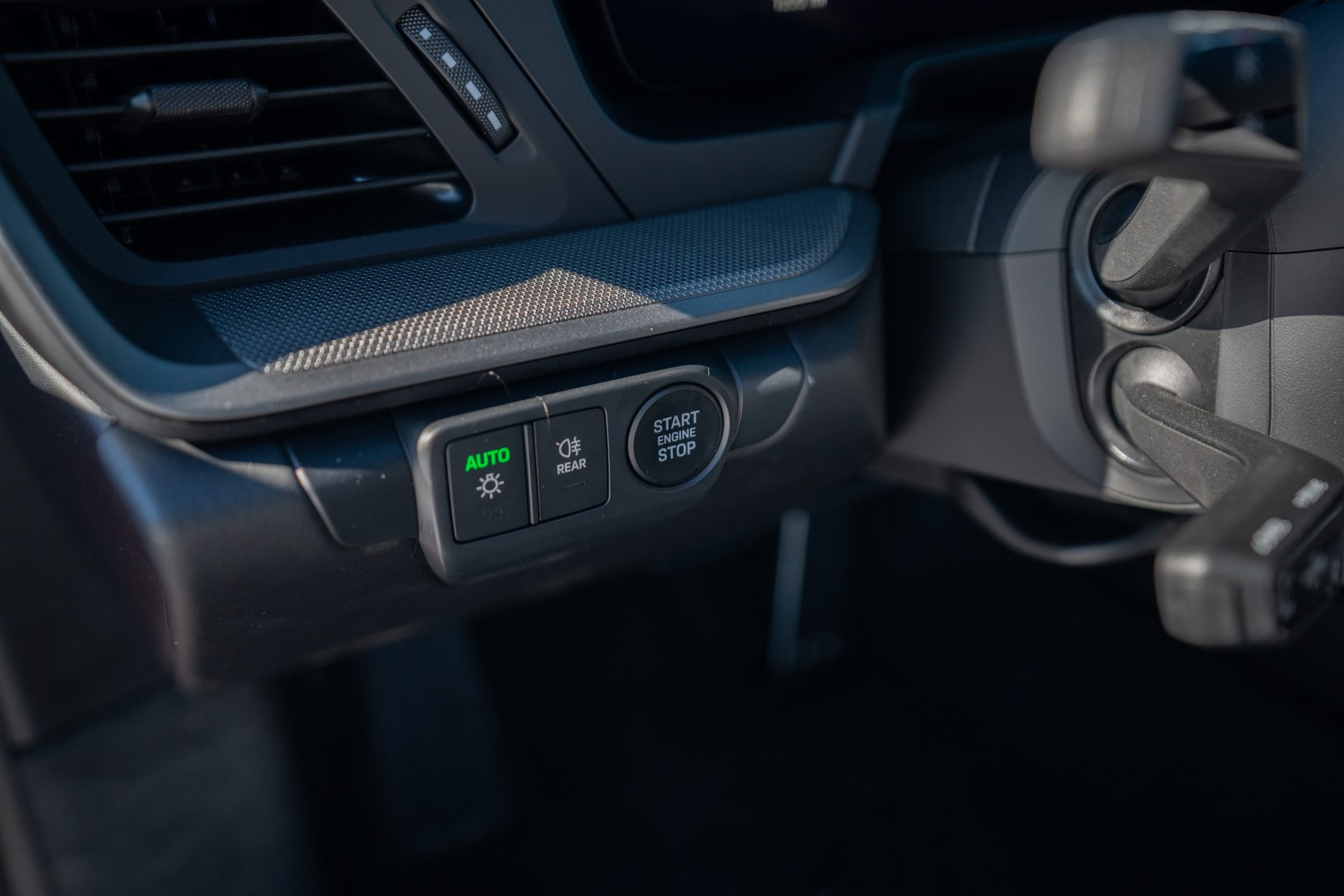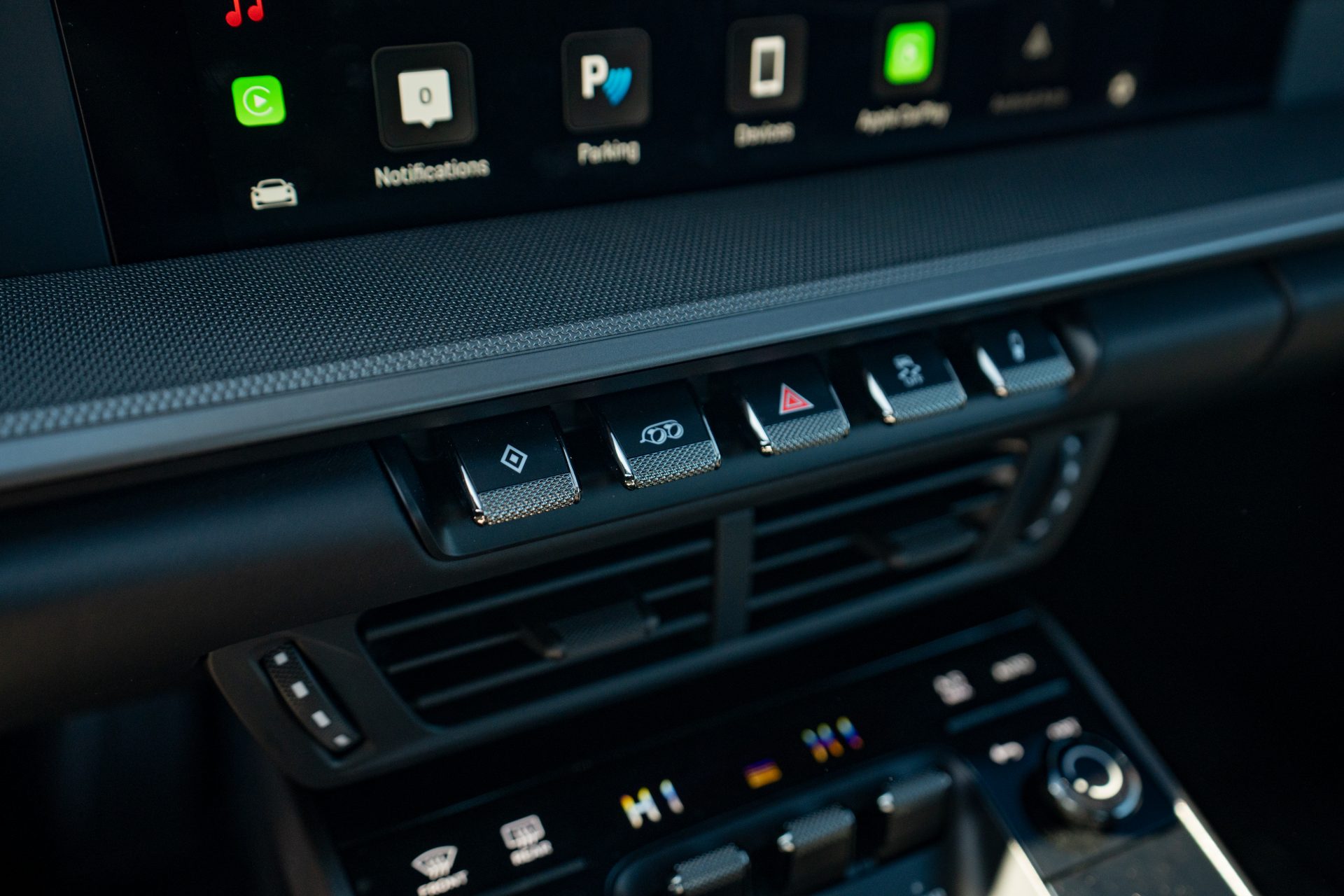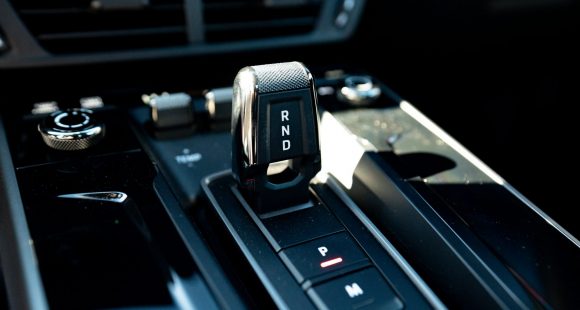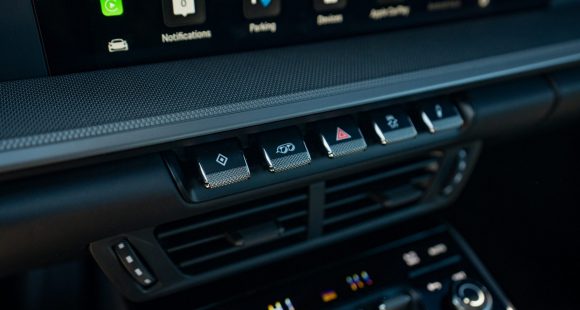2017 Jaguar F-TYPE SVR
The Jaguar F-TYPE really kicked off the recent Jaguar renaissance in style, but, it hasn’t been sitting idle since, as Jaguar has been consistently adding more and more performance into the mix. This F-TYPE SVR is just the latest. So we decided we’d better hurry up and enjoy it before Jaguar ups the ante even more.
The Jaguar F-TYPE, the best muscle car built outside of America, gets the Special Vehicle Operations treatment for 2017, creating the even more muscular F-TYPE SVR.
So, there’s a lot more here than just the typical sport package upgrade. Yes, more power, but also less weight; aero add-ons to increase downforce, and naturally a revised suspension to take advantage of all of the above.
Venturing onto Savannah’s Roebling Road Raceway in this animal is like cuddling with a pit-bull; things are warm and fuzzy at first, but you never should let your guard down, as it has the potential to go really wrong really quick.
It also sounds truly beastly, one of the best automotive sounds to emerge in recent years; its popping and crackling seemingly echoing all around the track and deep within our souls.
 And boy is it fast, though also somewhat sketchy; with an undeniable pucker factor, which makes it as fun as you’re willing to push it.
And boy is it fast, though also somewhat sketchy; with an undeniable pucker factor, which makes it as fun as you’re willing to push it.
It’s incredibly responsive as well, whether you’re ready for it or not. This Coupe does feel more solid than the last F-TYPE Roadster we tested, and you can easily feel the extra grip and power provided by the SVR upgrades.
But as gnarly as it can get, it’s also very easy to catch when things start to get away from you, thanks to steering that is super light, direct, and predictable. Torque-vectoring all-wheel-drive aids as well. It may be a Jaguar, but it feels nothing like your typical Euro sport coupe.
Around the track, its true 8-speed automatic transmission didn’t hamper it a bit. Though as great as things sound outside, the cockpit remains mostly Jaguar solemn, keeping us from easily hearing our shift points.
The auto certainly helps with acceleration. Just start feeding in the power, and the Jag squats down and leaps off the line; hitting 60 in 3.3-seconds. It’s one of the easiest to launch big horsepower cars we’ve driven.
 We kept the throttle open, letting the transmission shift when it pleased, and the ¼-mile was over in 11.6-seconds at 123 miles-per-hour.
We kept the throttle open, letting the transmission shift when it pleased, and the ¼-mile was over in 11.6-seconds at 123 miles-per-hour.
And of course we’d be remiss if we didn’t get into what makes all of that happen. The F-TYPE’s supercharged 5.0-liter V8 is still here, but its managing software has been recalibrated; resulting in a 25–horsepower boost to 575. Torque climbs 14 to 516.
The SVR’s exterior does indeed look more aggressive than before, though it remains very elegant, a gentlemen racer if you will.
Those added aero treatments include a tweaked front fascia, diverters in the wheel arches to channel additional air out of the fender vents, and a big active rear wing.
Many of those performance extras are carbon-fiber; to help your SVR stand out from common F-TYPE affair. You’ll see it on the roof, front chin spoiler, hood, side vents, and rear diffuser.
And of course the F-TYPE’s pop-out door handles still exude cool. Oh, and that titanium exhaust that sounds so great, it also shaves 35-lbs. of weight.
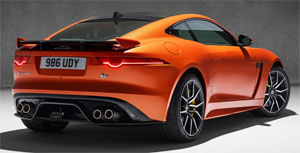 Most notably, as great as this SVR feels on the track, it still feels even more fun in “relaxed and profile” mode. No harsh suspension here; you’ll enjoy every minute behind the wheel.
Most notably, as great as this SVR feels on the track, it still feels even more fun in “relaxed and profile” mode. No harsh suspension here; you’ll enjoy every minute behind the wheel.
Jaguar has also left plenty of luxury touches inside for you and your lucky passengers to enjoy and be coddled by.
Government Fuel Economy Ratings are 15-City, 23-Highway, and 18–Combined. So there’s a poor Energy Impact Score thanks to use of 18.3-barrels of oil yearly and CO2 emissions of 8.3–tons.
This is a big boy toy, so of course it comes with a big boy price, $126,945. If that’s too much, there are a whole host of lesser F-TYPES available starting at $62,395.
Not too many years ago, it looked like motorized Jaguars were indeed an endangered species. But thanks to Jag re-introducing cars like the F-TYPE back into the environment, their population is resurging. The F-TYPE has been a true work in progress since it arrived, and not in a bad way. Rather, in a way that keeps us enjoying every one we drive, like this 2017 F-TYPE SVR; yet also looking forward to what they’ll come up with next.
Specifications
- Engine: 5.0 liter
- Horsepower: 575
- Torque: 516 lb-ft.
- 0-60 mph: 3.3 seconds
- 1/4 mile: 11.6 seconds @ 123 mph
- EPA: 15 mpg city / 23 mpg highway
- Energy Impact: 18.3 barrels of oil/yr
- CO2 Emissions: 8.3 tons/yr
2025 Subaru WRX tS
Subaru’s “World Rally eXperimental” Gets Tecnica-Tuned Tech
Building on its global rally heritage, WRX has been a standalone Subaru nameplate, marketed separately from garden variety Impreza, for two generations now. And while the current WRX still lacks the full STI treatment, this WRX tS serves up some of that high-performance spice we’ve been longing for.
Before we go flat out into our Track Test of this 2025 Subaru WRX tS, lets open the Subaru dictionary so we’re all on the same page. “tS” stands for “tuned by STI;” and “STI” is an acronym for “Subaru Tecnica International,” the brand’s high-performance sub-group best known for upgrading the WRX— oh, that stands for “World Rally eXperimental,” in case you didn’t know.
All that said, STI has been largely dormant for this WRX generation, but this tS sprinkles more of their engineering magic into the mix. No, that doesn’t mean extra power, but does mean significant chassis-related improvements.
First, electronically controlled dampers, adjustable through the 11.6-inch tablet-style infotainment screen. That meant a softer “comfort” mode on the 10+ hour commute to and from Savannah’s Roebling Road Raceway. But once we were there, it was the firmer “Sport+” setting all the way, heightening response from the WRX’s throttle and already quick dual-pinion power steering system. There’s still some body roll for rally-esque weight transfer, but it’s well sorted and provides the “toss-ability” you want in a WRX.
Though if you do autocross your tS, which we implore you to do, you might feel the six-piston front, two-piston rear Brembo brakes first. The bite is strong, giving good rotation in the corners and plenty of “halt” for this 3,400 lb. compact with minimal fade, keeping us on track all week…until some unfortunate winter weather passed overhead. No worries here, as Subaru’s Symmetrical All-Wheel-Drive system got us to the track for some powdered deserts: Frosted donuts served up Michelin style, a set of winter tires different from the grippy Bridgestone Potenza S007 rubber the tS typically rides on. Some prior hot laps of California’s Sonoma Raceway gave credence to those Bridgestones, and showed us what this hot-compact can do in ideal conditions.
It’s well sorted and provides the “toss-ability” you want in a WRX.
Other tS enhancements are cabin-based, namely these beautiful blue Recaros. Most of our staff appreciated their moderately-aggressive bolstering on both street and track. And they’re even heated, too. Another tS-only appointment is this 12.3-inch digital gauge display. It mimics the standard analog gauges with some additional info, but can switch to a navigation mode for more convenient route guidance.
We do wish our tS came in the new Galaxy Purple or the trademark World Rally Blue, but this Crystal White paint wasn’t too shabby, contrasting its Cherry Blossom Red badging and blacked-out lip spoiler. Otherwise, the tS is like any other WRX, down to the hood scoop funneling air to the top-mounted intercooler.
Underneath is the same turbocharged 2.4-liter flat-four in all other trims, boxing at 271 horsepower and 258 lb-ft of torque. The freak winter weather stopped straight-line testing, but a 0-60 time estimate of 5.5 seconds is about as spry as you realistically need, pulling strong through most of the tach; though the 6,000 RPM redline required attentive shifting of the six-speed box, which the tS comes exclusively with. The throws are precise, if a little long, and the clutch is wonderfully weighted.
With discontinuation of the Base trim, pricing for the WRX now starts with Premium at $36,920. The tS is at the top of the lineup with the automatic-only GT, both starting at $46,875. All WRXs continue to be made in Gunma, Japan.
If you’re an enthusiast itching to do the tuning yourself, perhaps the 2025 Subaru WRX tS is not for you. But if you want a plug-and-play experience, this is it. While it won’t exactly bestow the loose-cannon, top-level driving skills exhibited by famous WRC drivers upon you, the tS moves this WRX’s game in a direction we’ve so desperately wanted Subaru to take.
Specifications
As Tested
- Engine: 2.4-liter flat-four
- Tranmission: 6-speed manual
- Horsepower: 271
- Torque: 258 lb-ft
2025 Porsche 911 Carrera
Ever Evolving 911 Reaches New Heights
The Porsche 911 has existed for 60 years now! Amazing! And, you could argue that major changes over all those years have been relatively few, as constant incremental improvement is more the way that Porsche does business. With that in mind, let’s hit the track in the latest 911 and see what constant improvement means for 2025.
We’ve driven so many 911s here at MotorWeek, each seemingly more special than the last, so it’s a bit refreshing to be ripping around Savannah’s Roebling Road Raceway in a 2025 Porsche 911 that’s about as close as you can get to base these days. And the fact that it’s just as fun as all those exclusive pieces says a lot about how far the 911 has come. Perhaps it also speaks to how much a base 911 will set you back today as well; more on that later.
For now, we’re just thinking about the next apex, holding steady throttle as we approach, and getting on it way sooner than you’d expect without upsetting anything, as the 911 rockets off the corner thanks to tremendous grip and a PDK trans that finds the perfect gear before we even gave it a thought. Even with very cold track temps, we never struggled for grip or battled any wheelspin coming off of corners. And trying to land it in that perfect spot in braking zones is easy with strong brake performance that was predictable and consistent lap after lap; no wandering, and great feedback too.
Yes, even the standard 911 is near pure perfection on a racetrack. It gives you all the right feedback, stays incredibly flat through corners, makes you always feel totally in control, and again is just plain fun. Unless you’re chasing lap times, there’s really no need to head further up the 911 tree. Though it is worth noting the few upgrades that were on our Carrera did help the situation a little. The 20- and 21-inch Carrera S wheels enabled plenty of grip from the 305 Pirelli P Zero tires, the Sport Chrono Package allows 0-60 sprints of 3.7 seconds, an extended range fuel tank meant we could lap all day without having to fill up, and the fantastic Sport Seats provided great support and better comfort than we remember experiencing in a 911. The Sport Exhaust system didn’t add anything to performance, but made things sound a whole lot better, and the oval silver tips look great too.
We never struggled for grip or battled any wheel spin coming off of corners.
Our track time got cut short thanks to a rare snowstorm in Coastal Georgia, but the white stuff and blue sky made the perfect backdrop for our Guards Red Carrera. Exterior tweaks for what is officially the 992.2 include a reshaped front fascia with improved aerodynamics. All front lighting is now contained within the Matrix Design LED headlight housing. The rear fascia has also been smoothed out, the license plate moved higher, and Porsche 3D block lettering spelled out across the back beneath the active rear spoiler and new decklid grille.
Even without Turbo in the name, the standard 911 engine is indeed a turbo these days, a 3.0-liter flat-six twin-turbo delivering 388 horsepower and 331 lb-ft strictly to the rear wheels in the Carrera Coupe.
Inside the cabin, the 911 continues its slow crawl towards the modern, now including a 12.6-inch fully digital gauge display and a start button located on the left side of the steering wheel, with drive modes easily accessible on the wheel itself. In another no brainer move, Porsche now makes the rear seat a no cost option, so you can choose if you want it or not.
Government Fuel Economy Ratings are 18 City, 25 Highway, and 21 Combined. That’s only slightly worse than average for the Energy Impact Score; 14.2 barrels of annual oil consumption with 7.0 tons of CO2 emissions.
The good news is this 911 had the fewest number of options of any Porsche that we’ve tested in some time, and it was still plenty awesome; the bad news is, a base Porsche 911 Carrera Coupe now starts at $122,095.
But can you really put value on “the force,” this mythical power that Porsche seems to have, that somehow turns average drivers into great ones? It’s useless to resist as far as we’re concerned, as it only gets better with the 2025 Porsche 911 Carrera.
Specifications
As Tested
- Engine: 3.0-liter twin-turbo flat-6
- Transmission: 8-speed PDK
- Horsepower: 388
- Torque: 331 lb-ft















